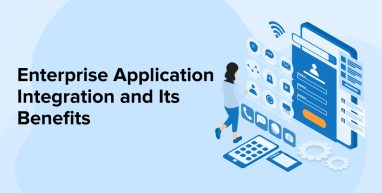
Enterprise application integration links a business’s numerous internal applications in an effective and adaptable design. It guarantees that professionals may utilize data as efficiently as possible and avoids data from being restricted to a single department.
And this is only one of many benefits. In this article, we will present to you the notion of enterprise application integration, in addition to its benefits and many varieties, so that you may allow your data to flow freely, improve accountability, and eventually boost your bottom line.
1. What is Enterprise Application Integration (EAI)?
Enterprise application integration (EAI) is the process of integrating software solutions and hardware throughout an enterprise via the application of technology and resources. Numerous private and open source programs implement EAI solutions.
EAI is associated with middleware technologies. Web application integration, system structure, data incorporation, and business operations are some of the emerging EAI technologies and tools used in management.
Here is what investopedia.com says about Enterprise application integration.
Enterprise application integration is the translation of data and other commands from one application format into another.
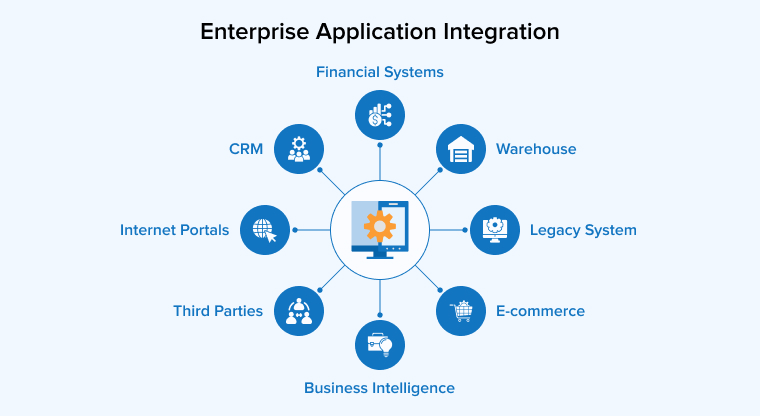
As business rules expands in scope, it employs a growing range of enterprise apps that optimize front and back-office operations administration. Companies rely on finance tools, operational CRM tools, cloud technologies, and a variety of other apps to perform vital company functions and activities.
Let’s have a look at some of the finest enterprise models and benefits!
1.1 Time to Consider Enterprise Application Integration
Reaching out to reputable enterprise app development firms could be pure bliss as EAI solutions use various ESB models of middleware to centralize and standardize integration practices across an entire infrastructure. The primary function of Enterprise Application Integration is to bridge the gap between different departmental software. It provides a user-friendly interface to better manage data flow and share it across multiple applications. Optimal use of EAI allows business needs to reap the complete benefits of their software investments.
Now which types of software are ideal for integration:
- Enterprise Resource Planning
- E-Commerce Optimization
- Human Resource Data
- Business analytics and intelligence
- Customer relationship management
- Supply chain management
2. Models for Enterprise Application Integration
In the world filled with options, how can you expect one cookie-cutter solution when it comes to enterprise application integration needs? Till date, it may quite interest you to know that several models have already been commenced just for the sake of establishing flawless communication between numerous enterprise applications. And I must say that the concept has matured over the years, you will see for yourself further.
Here down below, I would like to mention some of the standard models of Enterprise Application Integration that not just incorporates different frameworks or methods but overall enables your organization to establish a seamless communication and data management solutions.
2.1 Point-to-Point integration
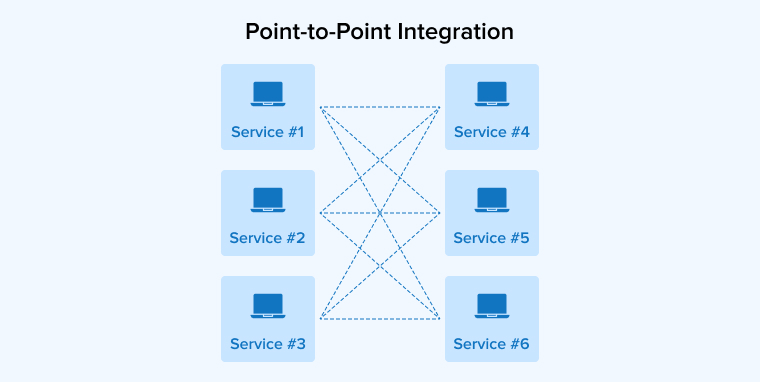
According to Gartner, this can be defined as a tightly coupled integration between the two points. For example, here you require having two sources, Salesforce and ERP systems and the data can be transformed in a single-go. Point to Point Integration is one of the simplest forms of enterprise application integration, you may ask why? Well, one of the main reasons could be that it becomes easy to access APIs.
2.2 Hub and Spoke Integration
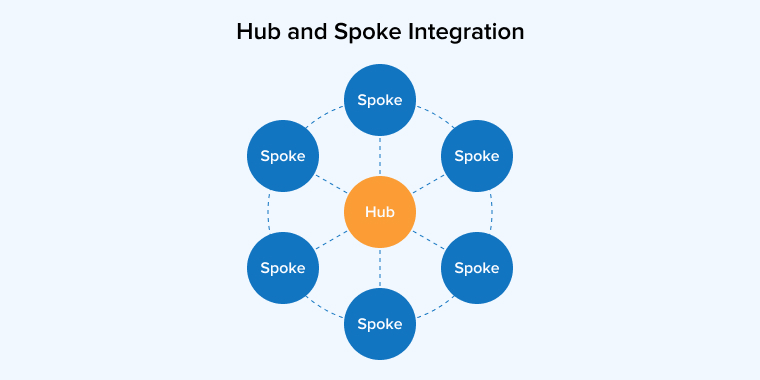
The next enterprise application integration model in line we have is the hub-and-spoke model. Here the process is like the information is not just distributed but reformatted between different databases. Now what’s so interesting about the model is here, the concept of interconnecting systems is eliminated entirely.
2.3 Bus Integration
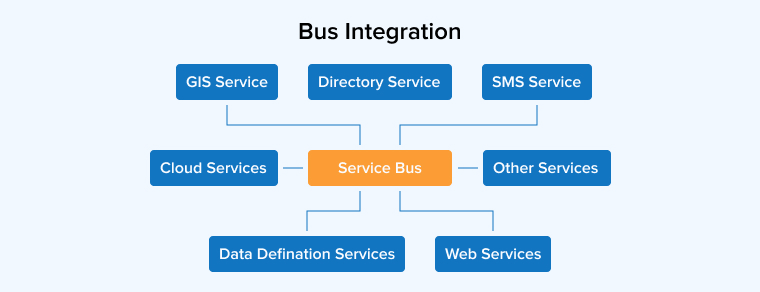
Another interesting enterprise application integration model we must consider is bus integration. Cost-effective infrastructure, improved application life-cycle management support, enhanced developers productivity and manageability are some of the key benefits offered by this one here.
2.4 Middleware

This enterprise integration model is one of a kind. It easily connects operating systems and communication protocols. So whether you are willing to enhance point to point connections or create innovative solutions, Middleware is the name to take into account. On and all, if you are looking for a versatile fix for all your modern business problems – Middleware is the name!
2.5 Microservices
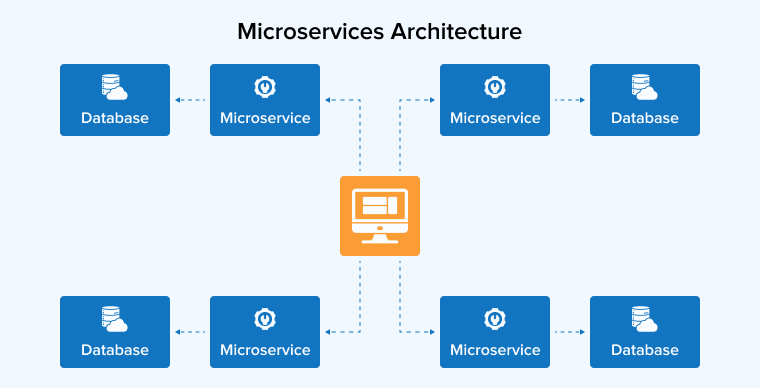
Among every other enterprise application integration model, this one uses cloud-based business applications where companies can pull and send data throughout all services with a local server.
3. Benefits of Enterprise Application Integration
Following are the benefits of enterprise application integration:
3.1 Automation of Business Processes
Enterprise Application Integration has full potential to streamline processes that include data or activity from multiple software applications. For instance, data from a CRM can be integrated with an e-mail marketing platform to deliver targeted messages to customers based on their prior behavior or demographics. That effort could then be coupled with an analytics package to measure the success of the email campaign. And all that data can be integrated with an ERP system to help the company invest resources where they’re most effective.
3.2 Improvement in Information Sharing
It may quite interest you to know that with appropriate integration of these enterprise applications, it is possible to conduct high-end interoperability between numerous departments of an organization. Moreover, users can get a holistic view of enterprise data by providing users with an integrated interface to access the functionality and data of various platforms. Thus, creating interoperability between complementing systems, both old and new.
3.3 Flexible IT Infrastructure
Scalability and flexibility have grown as a major norm. Enterprise Application Integration enables several organizations to develop IT facilities easily and respond timely to the growing expectations of the customer. And speaking about communication within the enterprise, several challenges might appear when employees who are not as tech-savvy as others need to do technical tasks. They face troubles in managing the IT-based structure.
In fact, many times organizations face such situations when it is difficult for the executives to take care of the IT structure in the enterprise where they are not able to utilize innovative technologies optimally. The EAI system helps in overcoming these hurdles and streamlines the automation business process applying better functionality in linking information as well as the functionality of many business applications into an easy-to-use interface.
3.4 Higher Efficiency
EAI systems do end up making communication easier, reducing their time and effort, better functionality, improved control. As a result, all of this leads to an increase in the efficiency of the organization. It enables the organization to identify and respond to new opportunities. It can help the companies address the change in market trends, their reputation management matters, issues related to disruptions in the supply chain etc. – from only one interface.
If done effectively, companies will soon be able to realize or acknowledge all the holistic advantages of their investments. Slowly and steadily it seems that these enterprise applications are found attaining acceptance and popularity among organizations across the globe.
It is not only advantageous to have EAI for enhancing organizational proficiencies, but also for the improvement of an individual’s performance with several features like employee records and rewards. According to several data sources, it has been observed that organizations store only around one-fifth of the data off-premises. It means there is a substantial lack of confidence in the cloud as well as the EAI system.
3.5 Provide Competitive Advantage and more opportunities
To top it all, enterprise application integration has resulted in creating a new paradigm in the use of technologies and services. Small, medium and large companies use it to facilitate their entire business processes since it allows them to integrate everything from software applications to hardware systems.
In addition, it is possible to enhance competitive advantages and opportunities compared to the different companies functioning as competition. What I mean is your management can be developed in several aspects such as marketing, which in the long run will give your single organization greater visibility in the business world.
Now did we mention that all this is going to be easy? Probably not! But considering these below-mentioned challenges of enterprise application development can definitely make things easy and hassle-free for you.
4. EAI vs. SOA vs. ESB
Since we have covered all the basics such as what is enterprise application integration, what are the benefits of integrating them, top standard enterprise application integration models to consider and now it’s time to focus on the difference between Enterprise Application Integration (EAI), Service-Oriented Architecture (SOA) and Enterprise Service Buses (ESB). One of the most crucial aspects of delving into any topic is that you must know the difference among its relatives. So without any further ado, let us differentiate between the concepts and see what makes each one of them of a kind.
However, before we begin here’s quick concept of SOA, ESB and EAI explained by Rajaraman on Quora.
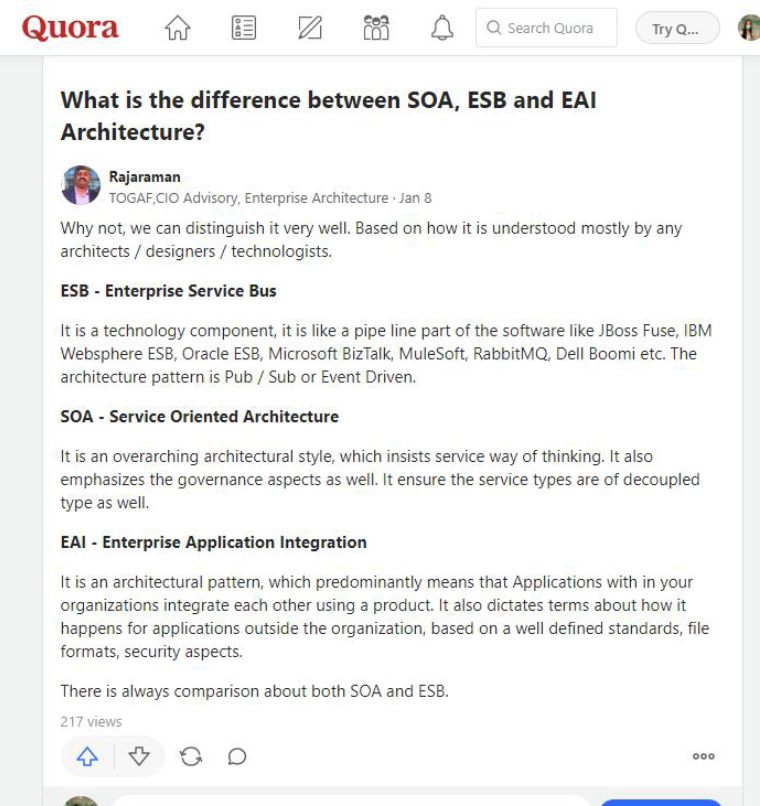
Now, let us discuss each in detail:
4.1 EAI – Enterprise Application Integration
I am sure there is not much new to talk about the middleware technologies concept as the entire blog focuses on the same but still let’s be unbiased here. When you implement EAI several procedures like customer relationship, supply chain management, inventory management, accurate forecasting becomes possible.
Some of its advantages include – streamlined data exchange, saves time and energy, reduced labor cost, and human errors are minimized.
4.2 SOA – Service-Oriented Architecture
Service-oriented architecture is a sub-category used to achieve full EAI. Some of its main advantages include high reusability, independent location, enhanced scalability. In addition, by integrating SOA, businesses can avail seamlessly throughout all existing systems. In fact, all the shortcomings of EAI and ESB technologies are overcomed by Service oriented architecture.
More or less, SOA brings better alignment to a business, such as bringing applications to market faster, lower the total cost of ownership of integration, and increased business agility.
4.3 ESB – Enterprise Service Bus
Enterprise Service Bus provides a wide range of benefits such as less customization, enhanced operational efficiency, easier operation support and the list goes on. ESB has a service-oriented infrastructure for data transmittance upon user request or event occurrence. It is more kind of a cloud-computing router regulating data between communicating applications.
So when deciding which one to implement. Well, all three concepts EAI, SOA and ESB are of a kind. For example, EAI is best for large scale applications whereas SOA is best when it comes to flexibility, and ESB excels at adapting to changing requirements and emerging techs.
5. Overcoming Enterprise Application Integration Challenges
Following are the overcoming enterprise application integration challenges:
5.1 Complex and Complicated
First and foremost, app integration is no longer limited to connection between one app and another. It also includes enabling new automated business processes or automating existing ones. Here it is very crucial for one to understand exactly what happens to your data and what can be the consequences every time when you change to the status quo. You see it really doesn’t matter whether you are creating new integrations, editing or deleting them, or transferring ownership. This is not at all easy and even frustrating. Multiple Enterprise applications such as ERP systems, CRM applications, SCM applications are used in the business intelligence to manage customers, payroll, and human resources systems typically cannot communicate with one another in order to share data or business rules.
To overcome such a challenge, take some time to work on how you can dodge the bullet. Also, make sure to avoid as many human interventions as you can, this is how you’ll get the work done faster and with fewer errors. The less dependent on a human, the better. Get things automated.
5.2 Multiple Integration Solutions
The next one is multiple integration solutions. I have come across several enterprises that consider such schemes of killing two birds with one arrow and unfortunately end up failing to execute any new application. Having various integration solutions to manage requires numerous specialized skills and training, which only increases maintenance costs, reduces efficiency, and limits enterprise-wide integration capabilities.
See data integration is a must-thing to do. So it is impossible to avoid. So what can be done is to look around for simpler and smaller integrations. Especially the ones which are more robust, and can create fewer dependencies than huge, complicated solutions.
5.3 Inaccessible Data
For most businesses, digital transformation is a constant journey instead of being a quick fix. No matter how tech-savvy you are, some information is likely still stored in a way that is inaccessible to those who could benefit from it. Now, why so? Well, the first and foremost could be that cloud apps aren’t adequately connected to each other, leaving business data spread across different islands in the cloud. And secondly, Some data is still stored on-premises in legacy databases or older apps. As a solution use high-end cloud data integration.
6. Conclusion
Enterprise Application Integration is becoming crucial and a must-have thing day by day. So it doesn’t matter how bad you want to carry your work using a single connected application, it’s almost impossible. A wisely implemented app integration helps eliminate data silos, reduce IT complexity, increase agility, etc.


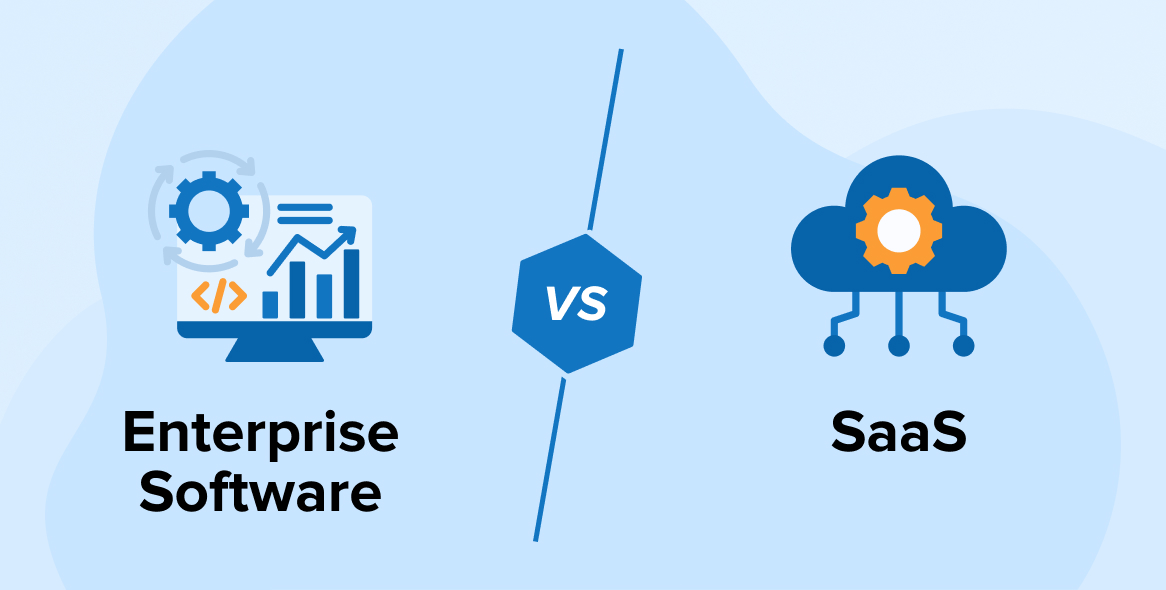
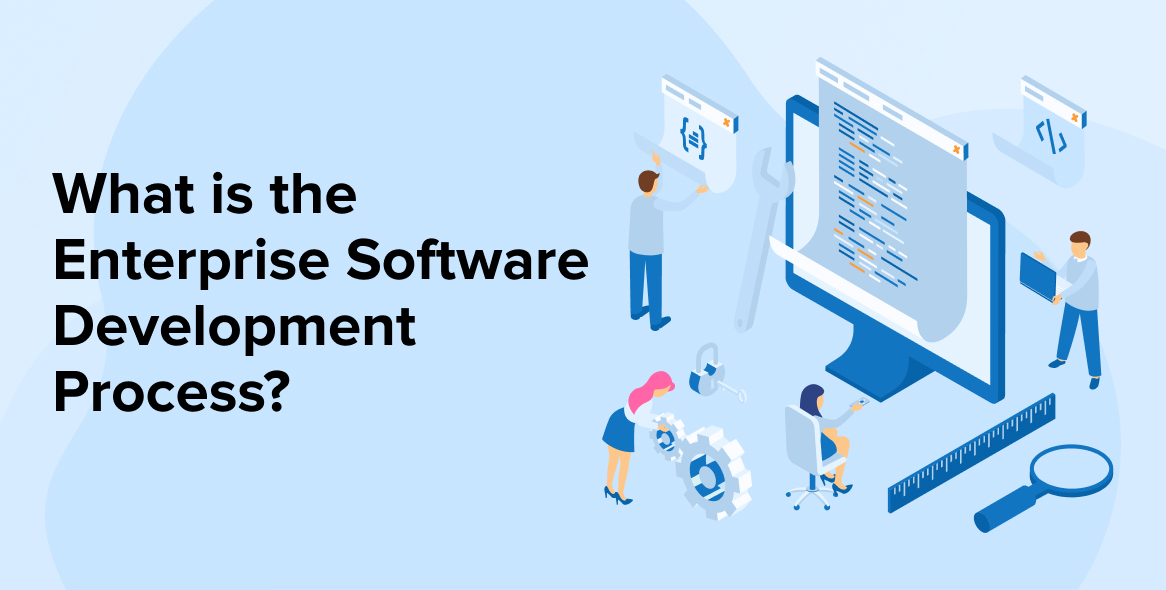
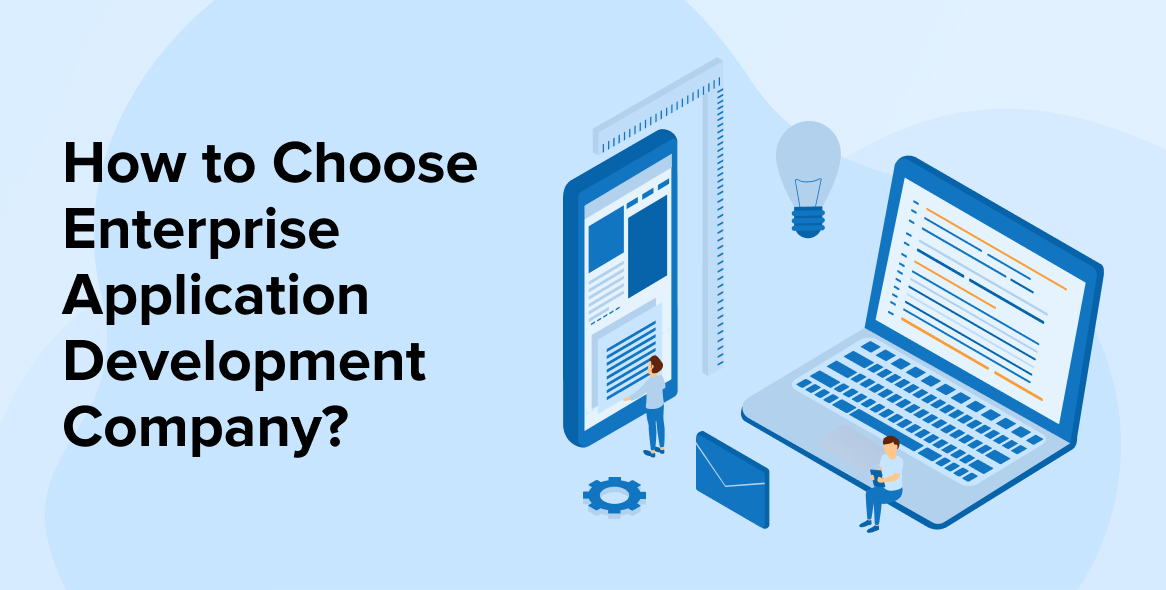

Comments
Leave a message...